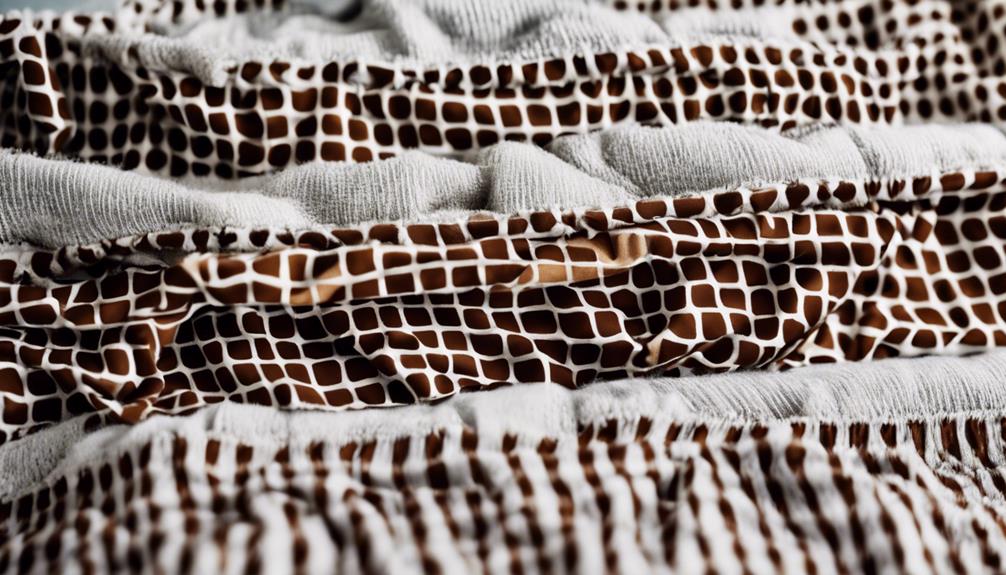When figuring out how to clean blankets, it is crucial to consider important factors such as the type of fabric and the severity of stains. Dry cleaning is recommended for delicate materials like wool, silk, and velvet as it helps preserve their quality and shape. On the other hand, washing at home can potentially weaken fibers and alter the form of the blanket. Fabric type and stain severity are key determinants in choosing the most appropriate cleaning method. To learn more about the benefits of dry cleaning, factors that affect blanket cleaning, and expert maintenance tips, information is accessible to improve blanket care.
Key Takeaways
- Dry clean delicate fabrics to preserve quality and shape.
- Consider fabric type and care labels for appropriate cleaning.
- Machine wash durable fabrics like cotton if suitable.
- Professional dry cleaning recommended for delicate materials.
- Washing at home may harm delicate fabrics, opt for dry cleaning.
Pros of Dry Cleaning Blankets
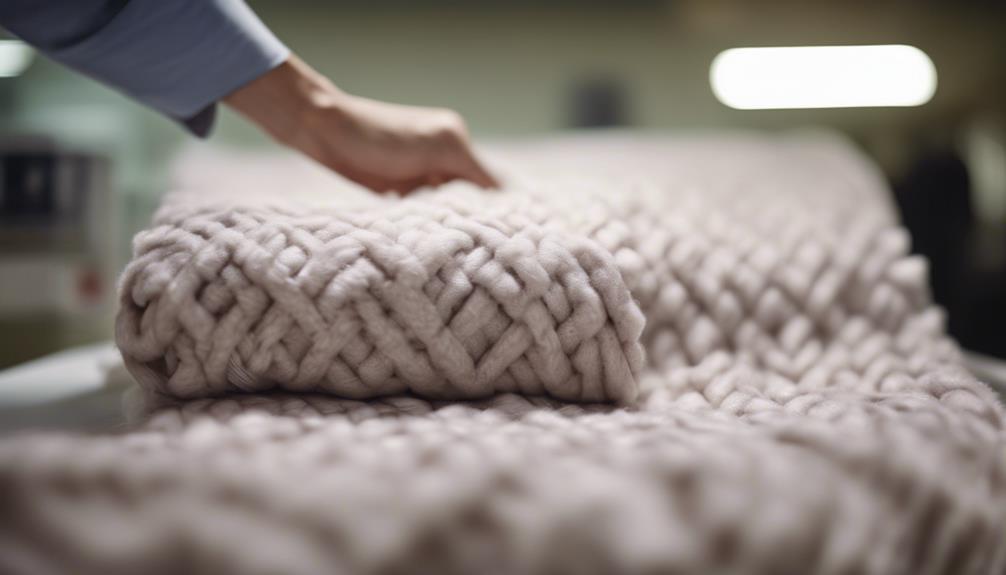
Dry cleaning blankets guarantees the preservation of their original size and shape, preventing shrinkage. When it comes to caring for blankets, especially those made from delicate fabrics like wool or silk, dry cleaning is the way to go.
Professional dry cleaners have the expertise to remove tough stains and dirt from blankets down to the fiber level, ensuring a thorough cleaning process without damaging the fabric. This meticulous care not only helps in maintaining the softness of the blankets but also preserves their vibrant colors.
Certain materials, such as velvet, benefit greatly from dry cleaning to retain their quality over time. By entrusting your blankets to dry cleaning professionals, you can rest assured that they'll receive the best care possible to keep them looking and feeling their best for years to come.
Cons of Washing Blankets at Home
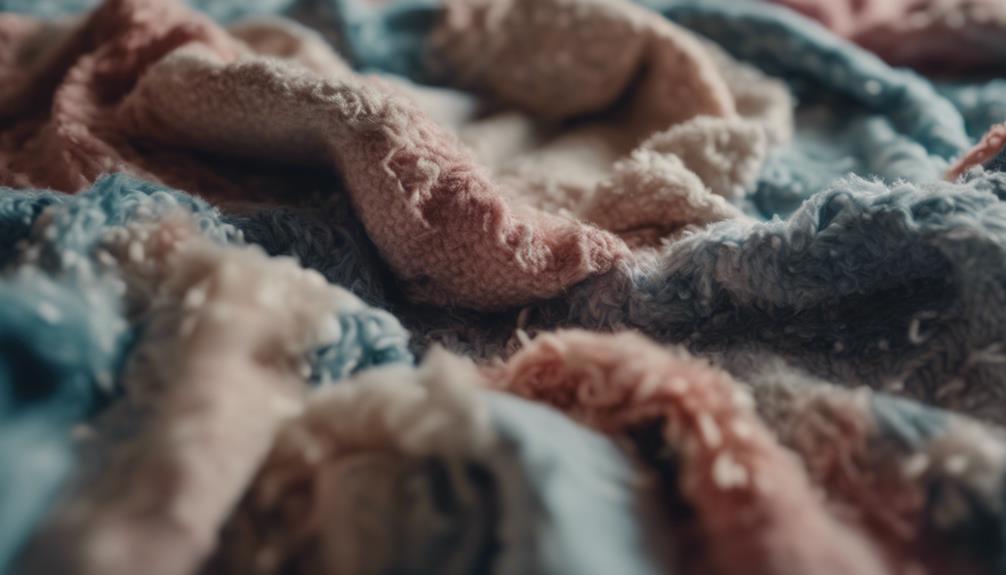
Shifting from the benefits of dry cleaning blankets, washing blankets at home presents several drawbacks that can compromise the quality and longevity of the bedding. When considering whether to wash blankets at home or opt for dry cleaning, it's essential to weigh the cons of the DIY approach:
- Fiber Weakening: Washing blankets at home can weaken fibers, making them more prone to rips, tears, and fading over time.
- Material Suitability: Certain materials like velvet, silk, and wool may not be suitable for washing in water, risking damage.
- Spin Cycle Stretch: Machine washing blankets with a spin cycle can stretch out the bedding, altering its shape and fit.
- Heat Hazards: High temperatures in the washer and dryer can cause shrinkage in blankets, affecting their size and comfort.
- Moisture Concerns: Hanging wet blankets outside to dry can lead to mold and mildew growth due to retained moisture, potentially causing health issues and infestations.
Factors Impacting Blanket Cleaning Method
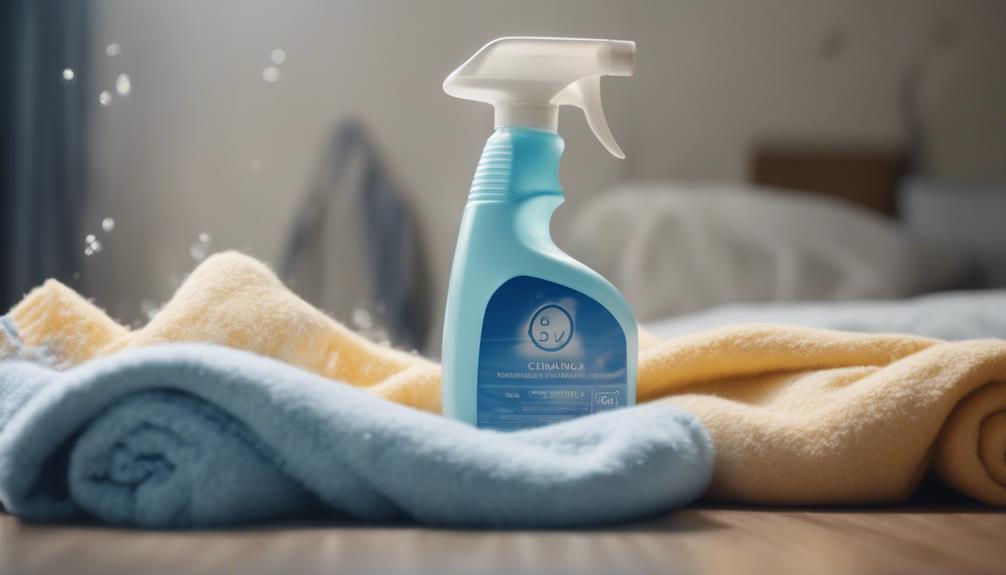
When determining the best cleaning method for blankets, it's important to take into account factors like the type of fabric, the severity of stains, and the compatibility with washing machines. Different fabrics may require specific cleaning techniques to prevent damage and maintain quality.
Evaluating stain severity can help decide if a gentle wash or professional dry cleaning is needed for effective removal. Checking washing machine compatibility guarantees that the blanket can be safely laundered at home without risking damage.
Fabric Type Considerations
Taking into account the type of fabric used in a blanket is essential in determining whether washing or dry cleaning is the appropriate cleaning method to preserve its quality and integrity.
When considering fabric type for blanket cleaning, keep in mind the following:
- Wool, silk, rayon, linen, suede, and leather blankets should be dry cleaned to maintain quality.
- Fabrics like velvet, silk, and wool aren't suitable for water washing.
- Dry cleaning is ideal for satin and microfiber blankets to preserve softness and colors.
- Wool blankets are well-suited for dry cleaning to prevent damage and maintain integrity.
- Always check care labels before deciding to wash or dry clean a blanket for proper care.
Stain Severity Assessment
Taking into account the severity of stains on a blanket is vital in determining the appropriate cleaning method, whether it be washing or dry cleaning. Tough stains such as oil, grease, or ink may require professional dry cleaning, while lighter stains from food or beverages can often be washed at home. It's important to take into account the material of the blanket and the type of stain present when deciding between washing and dry cleaning.
For delicate or special blankets, consulting a professional cleaner is advisable to make sure the most suitable cleaning method is used. Understanding the impact of stain severity allows for a more effective and efficient approach to maintaining the cleanliness and quality of your blankets.
Washing Machine Compatibility
Blankets made of materials like cotton are typically suitable for washing in a machine, while delicate materials such as wool or silk may require dry cleaning to prevent damage. Checking the care label provides specific instructions on the appropriate cleaning method. Using a washing machine can be convenient for blankets that are machine washable. Dry cleaning is recommended for preserving the quality of certain fabrics and avoiding shrinkage.
- Blankets made of cotton are often machine washable.
- Delicate materials like wool and silk may need dry cleaning.
- Care labels offer guidance on the suitable cleaning method.
- Machine washing is convenient for blankets that can withstand it.
- Dry cleaning helps maintain fabric quality and prevents shrinkage.
Best Practices for Dry Cleaning Blankets
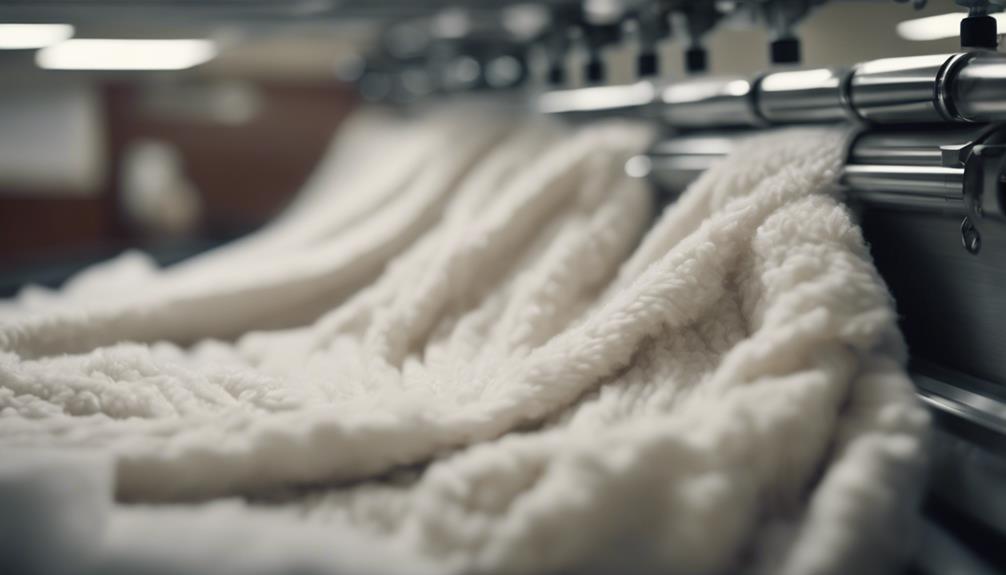
When dry cleaning blankets, it's important to follow specific best practices to guarantee excellent outcomes and maintain the integrity of delicate fabrics.
Professional dry cleaning is recommended for bedding items like comforters, especially those made from wool, silk, or velvet. These household fabrics benefit from the solvent-based cleaning process that avoids water and detergent, ensuring a gentle treatment.
Dry cleaning blankets effectively removes dirt, debris, and stains down to the fiber level without risking damage. Fabrics such as wool, silk, rayon, linen, suede, and leather retain their softness and colors when professionally dry cleaned.
To preserve the quality of these materials, it's essential to use a low heat setting during the process. By adhering to these best practices, dry cleaning blankets becomes a quick and efficient method that safeguards the fabric integrity and prolongs the lifespan of delicate bedding items.
Common Misconceptions About Washing Blankets
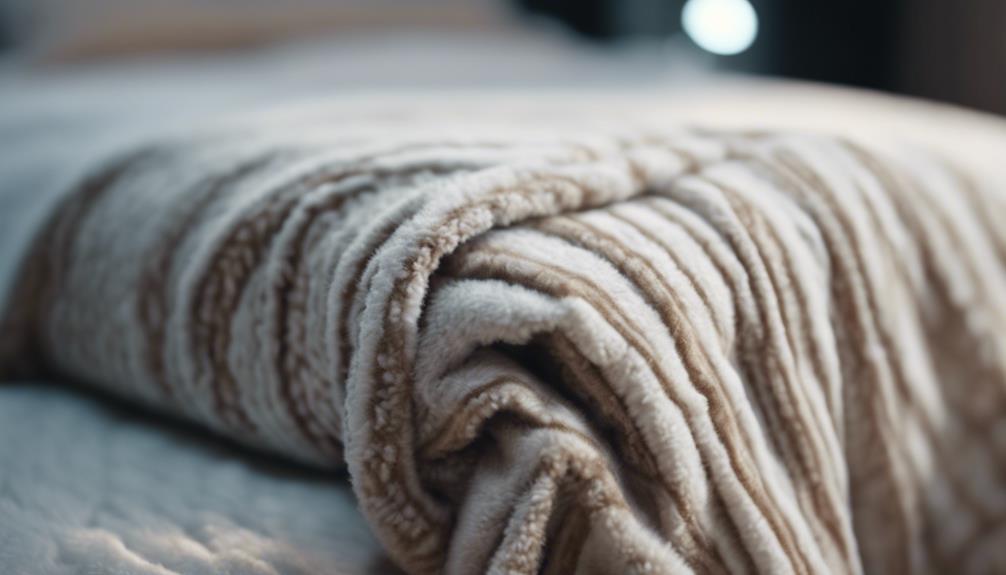
There are some common misconceptions about washing blankets that we should address.
For instance, many believe that machine washing is always the best option, but certain materials like silk and wool actually fare better with dry cleaning.
Additionally, some think that washing at home can remove all stains effectively, but professional dry cleaning can reach deep into the fibers for a more thorough cleaning process.
Washing Vs. Dry Cleaning
Despite common misconceptions, dry cleaning blankets offers significant benefits over traditional washing methods for maintaining fabric quality and cleanliness. When it comes to blankets, especially those in contact with skin, dirt, skin flakes, and dust mites can accumulate, making professional dry cleaning essential. Dry cleaning helps prevent shrinkage, a common issue with washing machines, as high temperatures can damage delicate fabrics.
Additionally, while washing machines may only remove surface dirt, dry cleaning can effectively eliminate dirt down to the fiber level. Fabrics like wool, silk, rayon, linen, suede, and leather are better suited for dry cleaning to preserve their quality and avoid the potential damage that can occur in washing machines.
- Prevents shrinkage
- Removes dirt down to the fiber level
- Essential for removing dust mites
- Preserves softness and colors of delicate fabrics
- Ideal for fabrics like wool, silk, and suede
Best Cleaning Methods
To effectively clean blankets, it's important to debunk common misconceptions about washing methods. Dry cleaning is highly recommended for delicate fabrics such as wool, silk, and velvet to guarantee protection.
Machine washing can weaken fibers, leading to rips, tears, and color fading over time. Opting for professional dry cleaning guarantees a thorough clean by removing dirt, stains, and debris down to the fiber level. This method also helps prevent shrinkage and maintains the softness and vibrant colors of fabrics like satin and microfiber.
Fabrics like wool, silk, rayon, linen, suede, and leather should always be entrusted to professional dry cleaning for the best results in preserving their quality and appearance.
Eco-Friendly Alternatives to Dry Cleaning
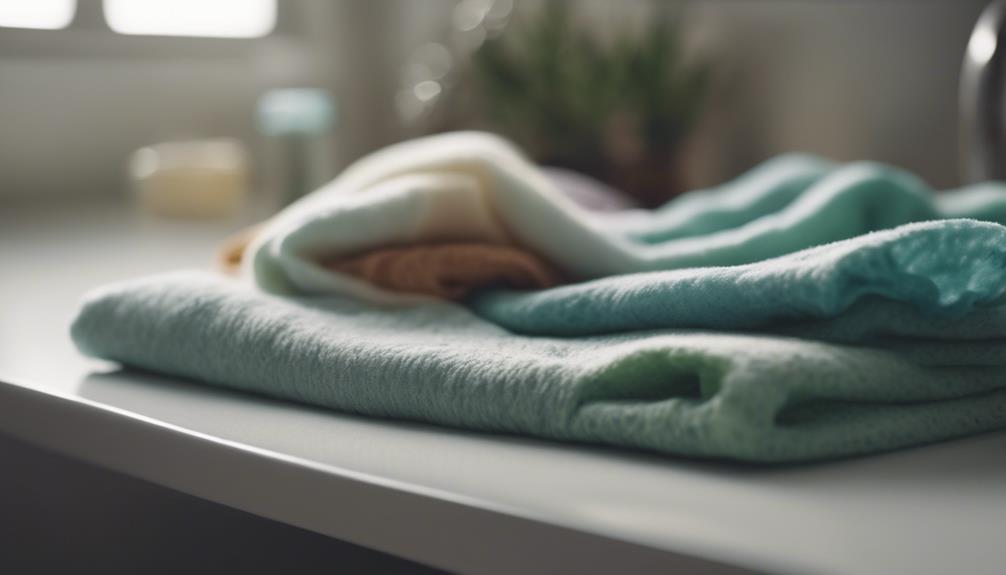
When considering eco-friendly alternatives to traditional dry cleaning, liquid carbon dioxide cleaning and GreenEarth Cleaning stand out as environmentally conscious options. Liquid carbon dioxide cleaning is a sustainable choice that avoids the use of harsh chemicals, while GreenEarth Cleaning utilizes liquid silicone, a non-toxic solvent.
In addition to these two methods, wet cleaning technology offers a water-based solution with biodegradable detergents, promoting eco-friendly practices. Plant-based solvents such as D5 are also becoming popular as sustainable alternatives in the dry cleaning industry, reducing the environmental impact of cleaning processes.
Additionally, professional wet cleaning methods, approved by the EPA as both environmentally safe and effective, ensure that garments are cleaned using methods that are gentle on the planet. By opting for these environmentally friendly alternatives, individuals can contribute to a greener future while maintaining the cleanliness of their belongings.
Expert Tips for Maintaining Clean Blankets
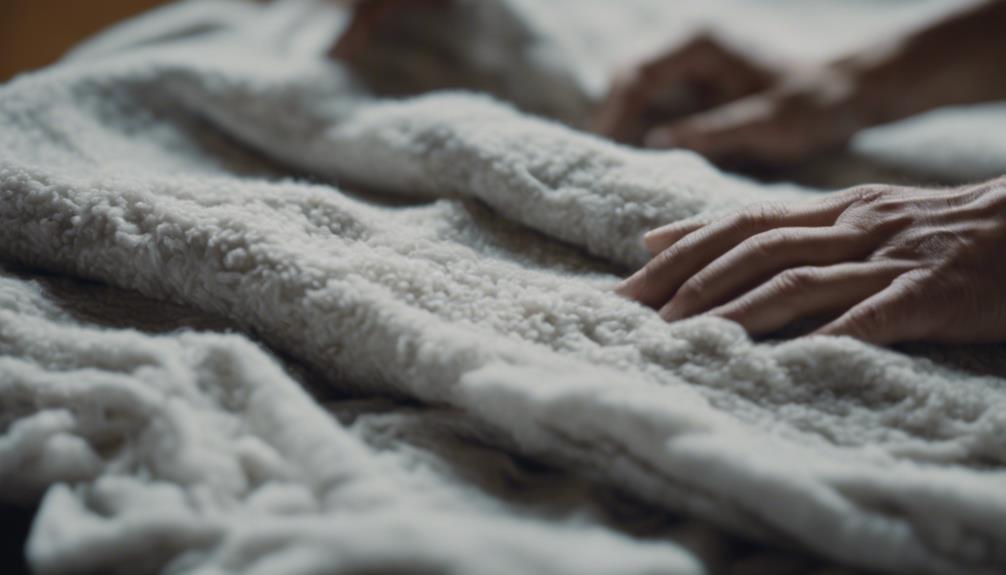
For effective maintenance of clean blankets, expert advice recommends following care labels for specific washing or dry cleaning instructions tailored to the blanket's material. Dry cleaning is often recommended for delicate materials such as wool, silk, and velvet to prevent damage during washing.
Blankets made of durable fabrics like cotton can typically withstand regular machine washing. Professional dry cleaning can help guarantee that your home maintains clean and well-preserved blankets, especially for material vulnerable to infestations like dust mites.
It's essential to heed care labels that specify dry cleaning only, as washing in a machine can harm the fabric of bedding that requires delicate handling.
Frequently Asked Questions
Is It Better to Wash or Dry Clean Blankets?
When considering whether to wash or dry clean blankets, it's important to prioritize the longevity and quality of the fabric. Dry cleaning helps preserve delicate materials like wool, silk, and velvet by preventing shrinkage and maintaining softness.
Washing in a machine can weaken fibers, leading to rips, tears, and fading over time. To guarantee your blankets stay in top condition, opting for dry cleaning is the better choice for maintaining their quality.
Is It Better to Dry Clean or Wash a Comforter?
Dry cleaning a comforter is advisable over washing for several reasons. It helps prevent shrinkage, maintains quality, and deeply cleans fibers.
Professionals can remove stains effectively, preserving softness and colors, especially for delicate fabrics like wool and silk. To guarantee longevity and proper care, opt for dry cleaning.
The process is thorough and gentle, ensuring your comforter stays fresh and pristine for longer.
Is It Safe to Dry Clean a Blanket?
Dry cleaning a blanket is safe for delicate fabrics like wool, silk, and velvet. It helps retain the blanket's new appearance longer than machine washing.
Professional dry cleaning removes dirt and stains down to the fiber level without damaging the material. If a blanket requires special care and can't be machine washed, dry cleaning is the way to go.
It's a recommended method for maintaining quality and extending a blanket's lifespan.
Can You Wash a Blanket in the Washing Machine?
Yes, blankets can generally be washed in a washing machine, but it's important to check the care label first.
Different materials require specific care instructions. For instance, cotton blankets can usually be machine washed with like colors and fabric softener, while wool blankets may need a delicate setting with cold water to prevent damage.
Always follow the care instructions to guarantee your blanket stays in good condition after washing.
– Can Blankets Be Washed and Then Recycled or Should They Be Dry Cleaned?
Blankets can be washed and recycled, but it’s important to follow the proper process for recycling blankets properly. While some blankets may need to be dry cleaned due to the material or construction, others can be washed and reused or recycled. Always check the care instructions and consider donating gently used blankets.
Conclusion
To sum up, whether to wash or dry clean your blankets ultimately depends on the material, size, and care instructions.
While dry cleaning may be more effective for delicate fabrics, washing at home can be a convenient and cost-effective option for everyday blankets.
By taking these factors into account and adhering to best practices for cleaning, you can guarantee your blankets stay fresh and cozy for years to come.
Remember, a clean blanket is like a warm hug on a chilly night – comforting and inviting.
